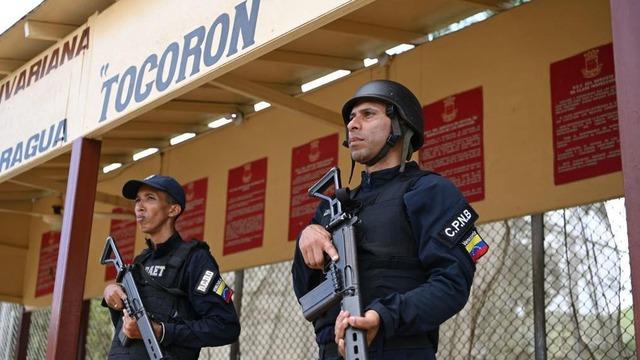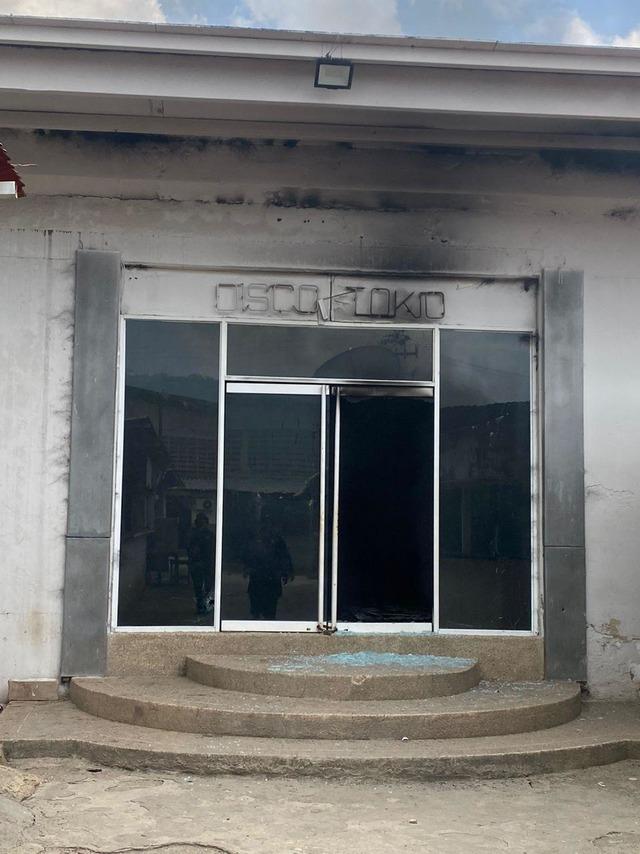The raid on the Tocorón prison in Venezuela, by the order of President Nicolas Maduro, destroyed the epicenter of Tren de Aragua, one of the most powerful criminal organizations in the country and Latin America.
The difference is immediately visible around the prison. You can no longer see dozens of women carrying bags of food and clothes to their relatives inside, or children pulling their mothers’ skirts impatiently to get into the pool as soon as possible. In the town of Tocorón, the kiosks and stalls selling beer and some other products acceptable in the prison are closed.
The stalls in front of the prison where visitors charge their mobile phones for $1 also seem abandoned. Meanwhile, the demolition of the buildings inside the prison continues.
I was in disbelief when the government announced its decision to establish control in Tocorón. Not even a year had passed since I visited the prison. I was writing a book about the Tren de Aragua gang, which operates throughout the continent, and I wanted to see what the prison, the stronghold of this criminal organization, looked like.
It was hard to think that control could be maintained here after what I saw when I entered the domain of Niño Guerrero, the well-known nickname of the gang leader and currently the most wanted criminal in Latin America.
‘WOULD YOU LIKE TO TAKE A PRISON TOUR?’
Prisoner Julio, who welcomed me that Sunday and showed me around the prison, known among the prisoners and inmates as the Big House, asked: “Is this your first time here?” asked.
The prison, 140 kilometers from Caracas, the capital of Venezuela, was built in 1982 in the town of Tocorón. While it was being built, it was planned to accommodate 750 prisoners in an area of 2,250 square meters. However, between 2015 and 2018, that is, during the years when the Tren de Aragua gang spread and became stronger, the population of the prison exceeded 7 thousand.
Julio insists: “Would you like to take a tour of the prison?” he said, as if he were talking about a tourist facility. While doing this tour, I would see things that I had never imagined before.

I couldn’t believe what I saw while walking around the prison. Tocorón looked more like an amusement park than a prison. It looked a bit like a wild west set for filming the dystopian HBO television series Westworld.
Swimming pools, zoo, sports fields, tiny houses with tin roofs, restaurants, baseball stadium, cockfighting ring, pharmacies, motorcycles and guns… All those photos in the media after the recent raid on the prison were real.

While we were continuing our conversation in the hall with television and wooden furniture arranged for visitors, Julio said, “Guerrero”, referring to Hector Rusthenford Guerrero Flores, the leader of the Tren de Aragua gang in Tocorón prison, commonly known as Niño Guerrero, “will not rest until this prison is turned into Tocorón City.” says.”
In Venezuela, Kent is added to the name of the neighborhoods where the middle class and rich people of the cities live. But Tocorón looked more like a small city.
The prison had a giant electrical unit that came into play during power outages, which are common in the country. In fact, a technician staff consisting of prisoners wearing blue jeans and colorful t-shirt uniforms was created to be responsible for the maintenance and repair of this electrical facility.
“The technicians are so skilled that when there are power outages, they are sent to nearby towns for repairs,” Julio said.
ARMED PRISONERS OR ‘GARITEROS’
Guerrero’s obsession with turning Tocorón into a wealthy neighborhood explains his quest for order and security within the prison, as well as the added entertainment and sports venues.
All areas inside the prison were supervised by armed prisoner-guards, referred to in prison slang as “gariteros” (a type of overseers), who carried AR-15 and AK-103 rifles or 9 mm pistols.
Two guards were taking care of the animals in the zoo, which was decorated with abundant trees and plants, with a large mountain in the background. It was said that much more precautions were taken after the disappearance of a snake that Guerrero valued very much.
All of the zoo’s inhabitants, including birds, monkeys, ostriches, felines, chickens, horses, pigs and cattle, lived in cages or areas arranged according to their needs. In fact, a sign explaining the characteristics of the animal was placed in front of each living area.
There was also a ring in the same area where prisoners made cockfights. Guerrero also had the adjacent baseball stadium with artificial grass floor designed according to his own taste.

THE PROCESS THAT BROUGHT THE END OF TOCORÓN
During my visit, two men, one with a rifle and the other with a pistol, watched my every move from a distance of about ten feet. Every hundred meters I saw an armed prisoner. There were also people traveling around on very powerful motorcycles.
I have seen places where bets are placed on horse races. The most striking thing was the shops that exclusively sold drugs, from a very effective type of marijuana to cocaine and synthetic substances.
With each step, I came across places I recognized from previously leaked photos. One of these was the Tokyo nightclub where Tocorón parties, whose reputation spread abroad, were held.
It was not easy to recognize it because its outer surface was covered with a black tarpaulin. The reason for this, according to a prisoner, was that after the previously leaked photos disturbed the government, an order was issued in mid-2022 to do some things more covertly. He could not say who sent this order and how.
This was perhaps the beginning of the process that brought Tocorón’s end.
At that time, Guerrero also ordered the counterfeiting activities carried out by gang members from various prisons to be stopped for a while. There were even many official civil servants among the large segments of society affected by the frauds.

‘THIS PRISON IS FOR MULTIMILLIONAIRES’
I ordered a snack for Julio, who showed me around the prison, and we continued our conversation while eating. He couldn’t always get bread or soda like this. He rarely had visitors.
But he said there were also prisoners in Tocorón who were in worse situations.
Those at the bottom of the prison hierarchy were called “sheep.” These were people who had no family or were punished for breaking the rules set by the leader.
“Sheep” could only enter and exit certain places in the prison and could not use the pool, restaurants and discotheque. These people were required to wear long-sleeved, striped or plaid shirts and ties in order to be recognized. These men, many of whom were skinned to bone due to hunger, were walking around like zombies.
Julio said, “This prison is for millionaires. Everything is about money.” “We all have to pay $15 every week ‘for the lawsuit’.” Each prisoner had to pay this money to the leader, as a kind of dues. Otherwise, he was beaten and punished.
Various prices were also set for other ‘services’. It was necessary to pay 20 dollars a week for a 4 square meter personal bed area, and 30 dollars for the spouse to sleep over on the weekend.

Another thing that caught my attention was that some workplaces inside the prison displayed advertising posters of famous and expensive brands such as Balenciaga, Gucci or Nike in their windows. This gave an idea about the size of the economy going on in prison.
What I couldn’t see were the gang leaders’ homes because they lived in an area only accessible to people close to the Tren de Aragua leadership. I learned that there are separate swimming pools and restaurants there too.
The government’s intervention last month with 11 thousand security guards put an end to this world.
I could not find out the fate of Julio, who showed me around the prison after the operation. Dozens of prisoners, including criminal leader Guerrero, are currently at large and wanted by security forces.
The seizure of the prison by the government dealt a serious blow to the gang, but there is not enough data to say that this prison is the end of this gang, which continues its activities not only in Venezuela, but also in Peru, Brazil, Colombia, Ecuador, Bolivia, Chile and possibly the United States.
